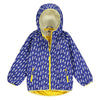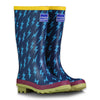
KS1 – Science – Scavenger Hunt
Download our Key Stage 1 – Science – Scavenger Hunt Worksheet Here
Learning Objectives
- To identify and name a variety of common wild and garden plants, including deciduous and evergreen trees.
- To describe and identify the basic structure of a variety of common flowering plants, including trees.
Resources
- Clipboards
- Scavenger worksheets (list objects to be found on one side eg. leaves, flowers, petals, fruit, roots, bulb, seed, trunk, branches and stem, deciduous, evergreen tree, variety of common wild and garden plants depending on area and tickbox next to each object).
- Pencils
- Magnifying glasses
Introduction
-Ensure understanding of differences between deciduous and evergreen trees
-Discuss plant structures including leaves, flowers, petals, fruit, roots, bulb, seed, trunk, branches and stem.
-Name a structure and choose a child to run and find one.
-Ask children if they ever been on a treasure hunt.
-Explain to children that they are going to be woodland pirates looking for woodland treasure!
Activity
- Woodland Treasure Hunt
- Put children into groups. Give each child a scavenger worksheet, clipboard and pencil.
- Ask children to find the objects listed and tick the box when they see them.
- Extension task: encourage children to use magnifying glasses to find objects Is there anything that they find that is not on the list? Ask children to draw or list objects.









